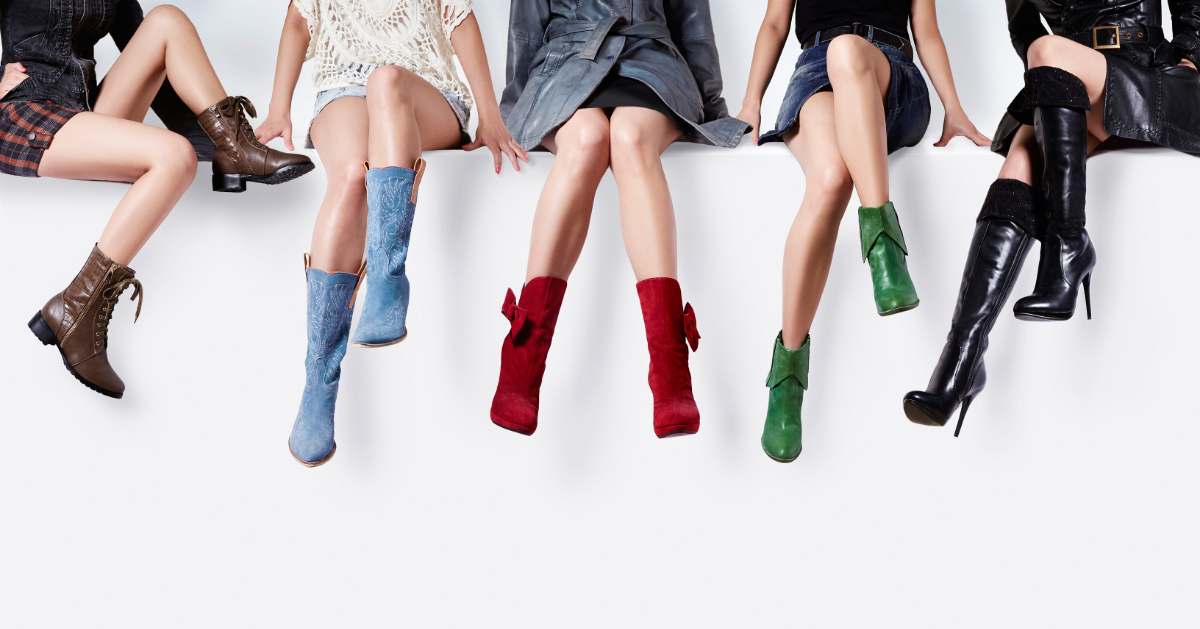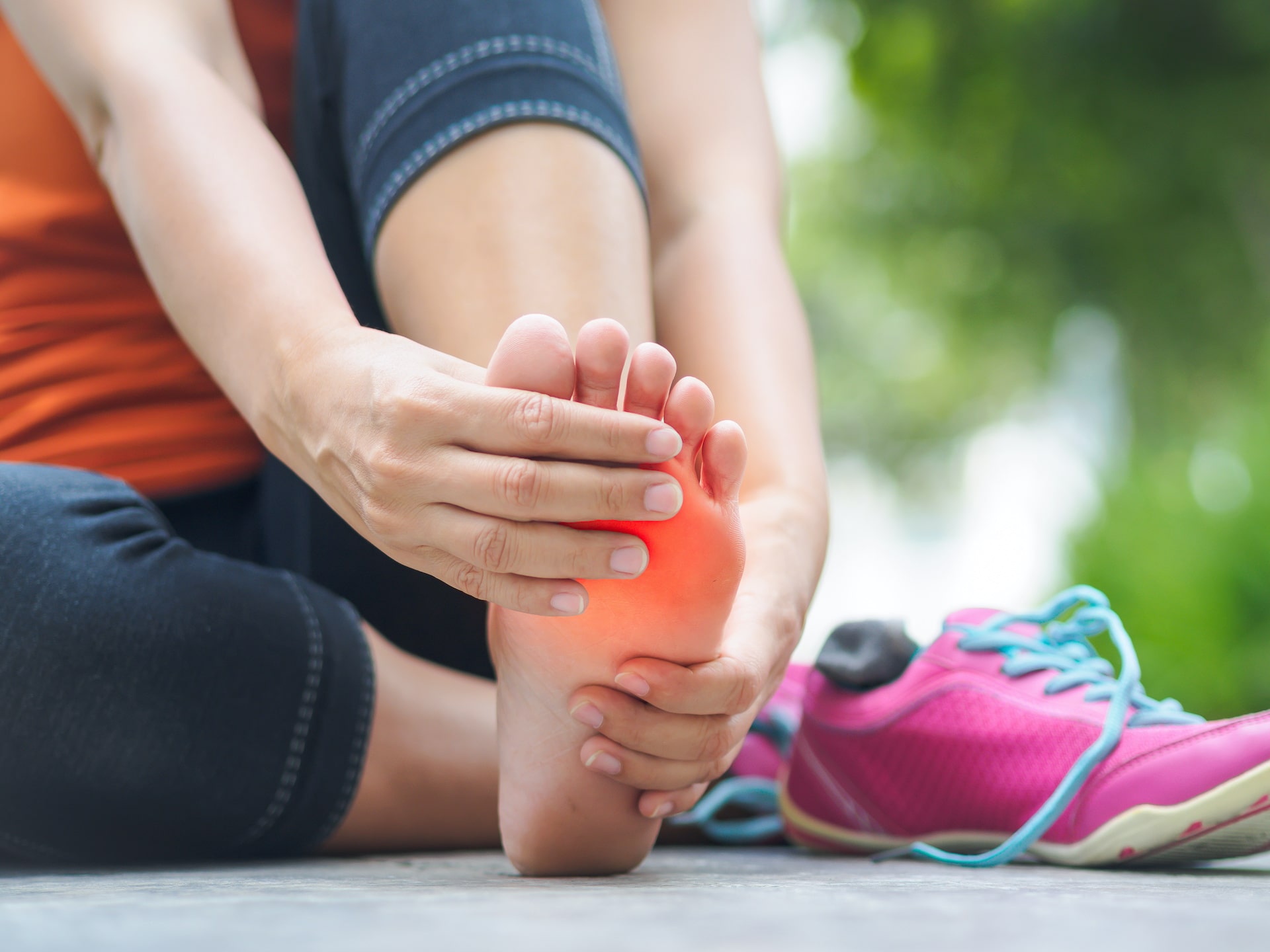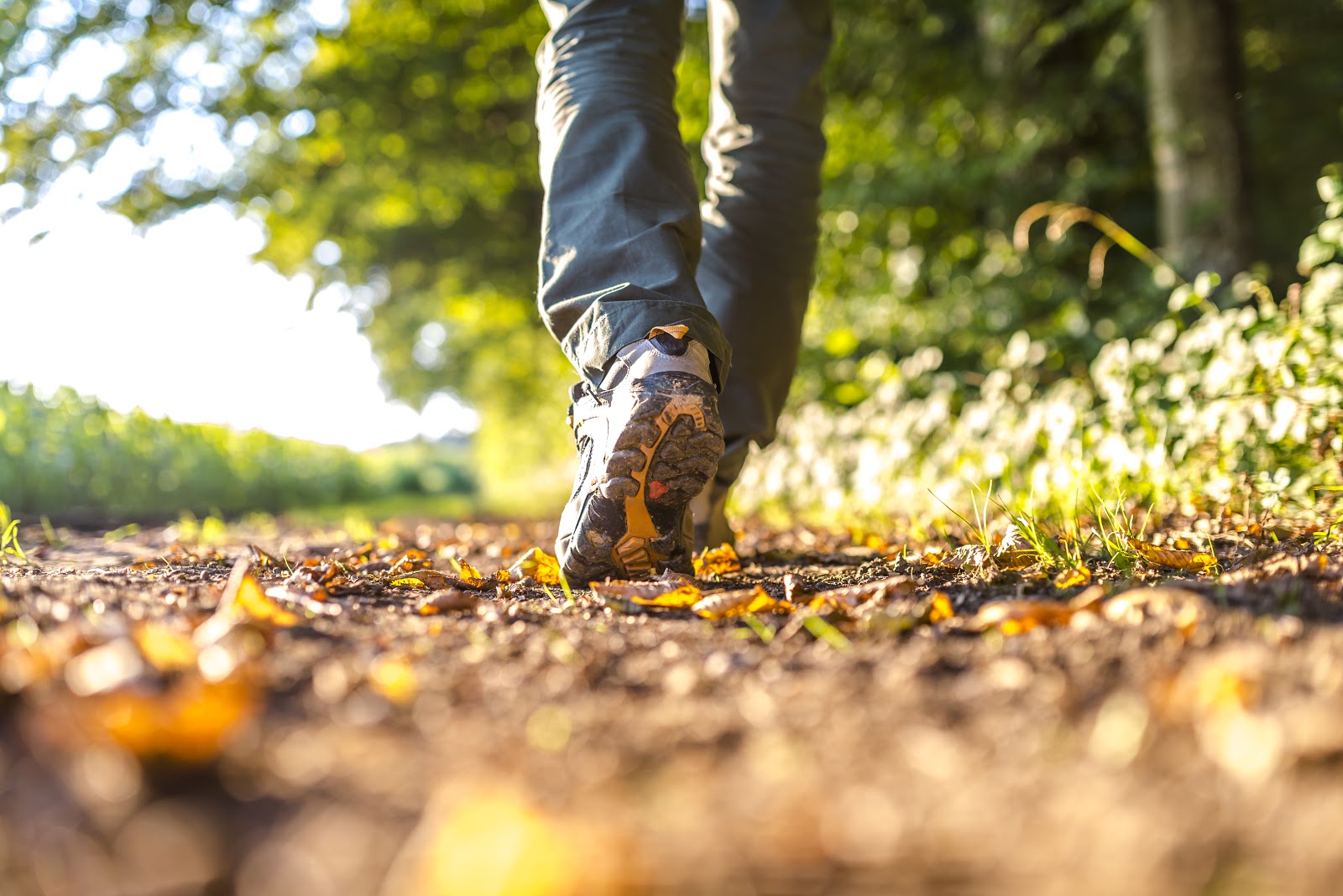
High Heel Boots
Prolonged and frequent high-heel wearing can cause a variety of problems. First, the unnatural downward flexion of your foot can cause tightening of your calf muscle and irritate the Achilles tendon. This leads to improper walking posture and can even lead to back problems. In addition, the typically small toe box can crowd your forefoot and toes causing hammertoes, bunions, and arthritis. A thin, skinny heel is also more likely to cause falls, which can cause an ankle sprain or even a fracture. When you’re walking on a wet or slippery surface, your risk of these injuries is even greater.
TIP: Alternate your high heels with a lower, one-inch heel or flat boot with proper support. You don’t have to give up high-heeled boots, just don’t wear them more than three days a week if possible. Also, when it’s wet or slippery outside, wear boots without heels when walking outdoors, then switch boots when you get to your destination. This will also keep your favorite boots cleaner, especially if they are leather or suede. Water and salt are not good for those materials and will stain them.
Loose-Fitting Floppy Boots
While soft, slipper-like boots (think Uggs) are popular, their loose, no-support construction could be a disaster for your feet. They offer no arch support for someone with flat feet. This can cause pain and even tendonitis. People who have a medium or high arch may find that the lack of support causes heel pain or plantar fasciitis. In addition, the super-warm, fuzzy interiors can be a breeding ground for sweat, causing odor and athlete’s foot.
TIP: These boots aren’t designed to be walking boots. Wear them only for short periods of time. Choose a supportive, low-heeled boot to wear on longer treks. Also, to avoid odor and fungal growth, spray the inside of the boot with antifungal shoe spray every few weeks, and wear moisture-wicking socks. Avoid wearing them with no socks.
Slippery Boots
Some boots are simply made to look attractive and aren’t equipped to handle wet, slick floors or icy sidewalks. This could lead to a slip and fall, which could be, at best, a few bumps and bruises. At worst, you could end up with sprains or broken bones.
TIP: Check the bottom of the boots for traction. Look for boots designed to offer you protection in the snow and ice. Consider retiring old boots that are worn down or try one of these 7 hacks to make your soles less slippery
Boots can be a fun fashion accessory – but choosing the wrong ones could lead to foot pain and injury. Luckily, you don’t have to give up style to take good care of your feet. Follow these tips to keep your feet both haute and happy.
Call Kansas City Foot Specialists to schedule an evaluation at (913) 338-4440, or request an appointment online so we can work with you to keep your feet healthy.



